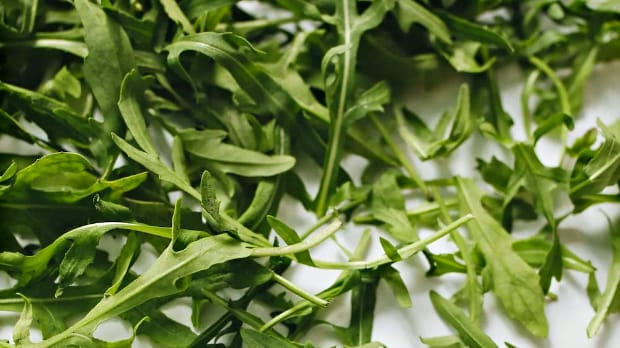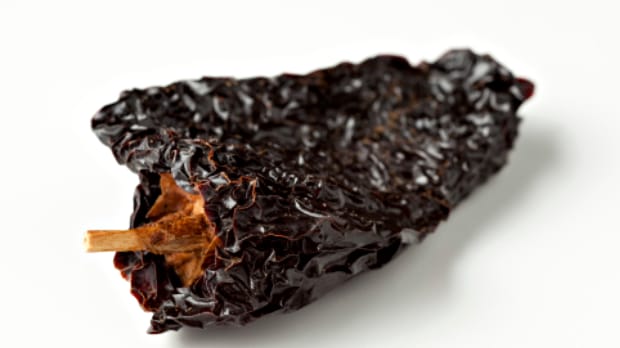What is Japanese Eggplant?
Japanese eggplant is a vegetable that is known for its lengthy size, growing between six to eight inches in length. The shape of this veggie is thin and elongated, making it easy to slice and prepare for cooking. Its outer skin is a delicate shade of lavender, while the inside is tender and meaty. This type of eggplant is commonly used in Asian cuisine, and it is praised for its mild and slightly sweet flavor. Whether you want to grill, roast, or sauté it, Japanese eggplant is a versatile ingredient that can be used in many dishes to add a unique texture and taste.
- What is Japanese Eggplant?
- What are the Nutritional Benefits of Japanese Eggplant?
- Types Available
- What are the Best Uses for Japanese Eggplant?
- How do You Store Japanese Eggplant?
- How to Prepare Japanese Eggplant
- When is Japanese Eggplant in Season?
- What to Serve Japanese Eggplant With?
- What Traditional Cuisines Use Japanese Eggplant?
- Tasty Recipes
- Key Takeaways
What are the Nutritional Benefits of Japanese Eggplant?
Are you curious about the nutritional benefits of Japanese eggplant? This delightful produce is packed with nutrition and amazing health benefits. Firstly, Japanese eggplant is low in calories, making it a perfect addition to your dishes if you are on a diet or simply watching your calorie intake. But that’s not all, this produce is also rich in fiber which aids digestion and reduces the risk of heart diseases, diabetes, and obesity.
Moreover, Japanese eggplant is packed with antioxidants, such as Vitamin C and anthocyanins, which protect the cells from damage and strengthen the immune system. It also contains minerals such as potassium, magnesium, and calcium, that are essential for bone health and nerve function.

Lastly, Japanese eggplant is versatile and can be used in various dishes. You can grill it, bake it, or stir-fry it with other veggies. You can even make a delicious vegetarian eggplant parmesan that will leave you wanting more. So, if you’re looking to add nutritious produce to your meals, give Japanese eggplant a try and experience its amazing health benefits.
Types Available
Today, we’re going to talk about Japanese Eggplant, a versatile vegetable that is nutritious and delicious. You may be familiar with the traditional large and round eggplant, but did you know that there are several different types of Japanese Eggplant available out there? Let’s take a look at some of them.
The most common type of Japanese eggplant is the purple variety. It is characterized by its long, slender shape, and glossy purple skin. It has fewer seeds than other varieties, which means it has a smoother texture and a slightly sweeter taste. It’s perfect for grilling, roasting, or stir-frying. These purple beauties are the ones you’re most likely to see in the grocery store.

There are other varieties of long, thin eggplants that are labeled as Japanese or Asian. The biggest difference among the types is the skin color, which makes them beautiful and fun to add to your favorites dishes. Colors to look out for are: white, yellow, green and striped. The purples can also range from a light lavender pink to almost black. You might find some of these fun types in specialty stores or farmers markets, or try growing your own.
No matter which color or variety of Japanese eggplant you choose, you’ll find that they cook up well in many dishes. They are usually thin skinned, giving them a better texture when cooked. And the long thin shape means less seeds on the inside, making the flavor less bitter than the larger globe type eggplants.
What are the Best Uses for Japanese Eggplant?
If you’re looking for a unique vegetable to add to your dinner rotation, Japanese eggplant is a great choice! This variety of eggplant has a slim and elongated shape, and a thin skin that makes it quick and easy to cook. Here are some of our favorite ways to use Japanese eggplant.
Grilling: Slice the eggplant into long pieces and brush them with olive oil. Grill for a few minutes on each side until they are browned and tender. Serve as a side dish or on top of a salad.
Stir-fry: Cut the eggplant into bite-sized pieces and stir-fry with your favorite veggies and protein. Make a sauce with soy sauce, honey, garlic, and ginger for added flavor.
Roasting: Cut the eggplant into rounds and roast in the oven with olive oil and your favorite seasonings. Use as a topping for pizza, sandwiches, or pasta.
Baked: Slice the eggplant in half and scoop out the center. Fill with a mixture of rice, veggies, and cheese and bake until tender and golden brown.
No matter how you choose to use it, Japanese eggplant is a versatile and delicious vegetable that is sure to become a staple in your kitchen. Enjoy!
How do You Store Japanese Eggplant?
Have you ever bought a Japanese eggplant and then struggled to keep it fresh? Don’t worry, you’re not alone! Storing Japanese eggplants properly is key to maintaining their flavor and texture. Here are some tips to help you store Japanese eggplants.
Keep them cool: Japanese eggplants are sensitive to heat, so it’s important to keep them cool. Store them in the crisper drawer of your fridge or an unsealed plastic bag if you plan on using them within a few days.
Keep them dry: Moisture can cause Japanese eggplants to spoil quickly. Make sure they are completely dry before storing them.
Don’t wash them: It’s best not to wash your Japanese eggplants until just before you plan to use them. Washing them can cause them to spoil faster.
Use them quickly: Japanese eggplants are best eaten within a few days of purchasing them. They can quickly lose their flavor and texture if stored for too long.
By following these simple tips, you can keep your Japanese eggplants fresh and delicious! Remember, proper storage is the key to enjoying the full flavor of these unique vegetables.
How to Prepare Japanese Eggplant
Good news foodies! Today, we’re talking about how to prepare Japanese eggplants. A popular and delicious ingredient in Asian cuisine, these eggplants are not only healthy but also easy to cook. Here are the simple steps you need to follow.
Wash the eggplants with cold water and dry them with a clean kitchen towel. Cut off the stem from the top of each eggplant, and then slice them. Sprinkle salt on each side of the eggplant pieces, and let them sit for around 15-20 minutes. This will help to remove any excess moisture, making the eggplants less watery and more flavorful. Rinse the eggplant quarters and pat them dry with a kitchen towel or paper towels. Now they’re ready to cook using any method you like.
When is Japanese Eggplant in Season?
Are you a fan of Japanese eggplants? Have you ever wondered when the best time is to purchase this delicious produce? Well, you’re in luck! The best time to buy these eggplants is during the summertime, specifically from July to September. During these months, Japanese eggplants are at their peak freshness and flavor. They are typically abundant in supermarkets, farmer’s markets and local grocery stores.
During the summertime, these eggplants are delicious when grilled, roasted, or sautéed. You can use them in stir-fries or as a meat substitute in your favorite recipes. They also make a great addition to salads or as a side dish.
It’s important to note that while you can find Japanese eggplants year-round, they may not be as fresh or flavorful as during their peak season. However, if you can’t wait until summertime to enjoy these tasty eggplants, make sure to choose ones that are firm, smooth and shiny. Avoid those that are soft, bruised or discolored.
Improve Your Health With Seasonal Eating
What to Serve Japanese Eggplant With?
- Miso Glaze
- Stir-Fry
- Tofu Curry
- Shrimp
- Chicken Adobo
- Tomato Soup
- Thai Basil
- Tahini
- Mushrooms
- Cucumber
What Traditional Cuisines Use Japanese Eggplant?
Japanese eggplant is most commonly used in Japanese, Chinese, and Thai cuisines. It is typically grilled, steamed, or stir-fried, and can also be used in soups, stews, curries, and salads.
Tasty Recipes
- Japanese Eggplants with Sriracha Shrimp
- Eggplant with Thai Basil & Chicken
- Japanese Eggplant Salad
- Japanese Eggplant Miso Noodle Soup
- Grilled Japanese Eggplant with Tahini Sauce
One of My Favorite Recipes is Simple Recipe for Roasting Eggplant and Zucchini on the Grill
Key Takeaways
- Choose smaller eggplants with smooth, shiny, and taut skin.
- Peel the skin off before cooking to reduce bitterness.
- Slice or cube the eggplant to ensure even cooking.
- Pre-salt the eggplant to draw out excess moisture and reduce bitterness.
- Use high heat to quickly cook the eggplant, which helps maintain its texture and flavor.
- Add oil or butter to the pan to prevent sticking.
- Consider adding seasonings such as garlic, ginger, and soy sauce for added flavor.
- Serve cooked eggplant warm with rice or other dishes.
References: Nutritional quality of some varieties of eggplant (Solanum melongena L.) | Phytochemical composition and antioxidant activity of Japanese and Indian eggplant (Solanum melongena L.) | Health Benefits of Eggplant: A Review | Nutritional Composition and Antioxidant Activity of Japanese Eggplant Varieties




